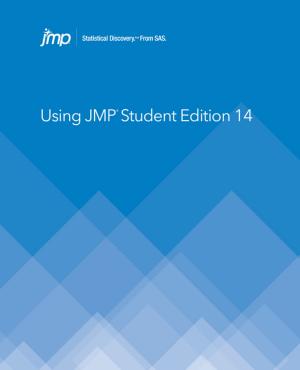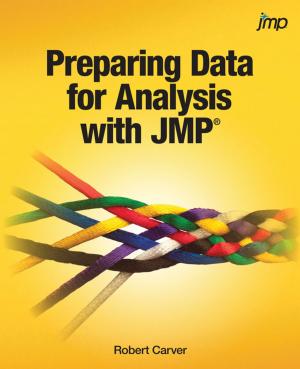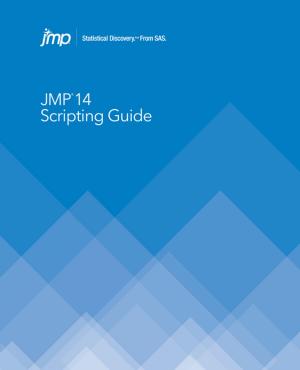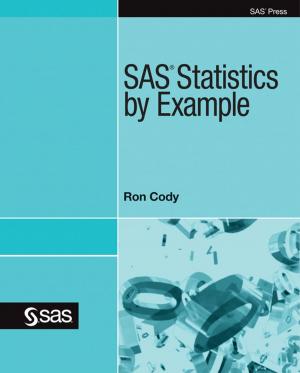Discovering Partial Least Squares with JMP
Nonfiction, Computers, Application Software, Business Software| Author: | Ian Cox, Marie Gaudard | ISBN: | 9781612908298 |
| Publisher: | SAS Institute | Publication: | October 1, 2013 |
| Imprint: | SAS Institute | Language: | English |
| Author: | Ian Cox, Marie Gaudard |
| ISBN: | 9781612908298 |
| Publisher: | SAS Institute |
| Publication: | October 1, 2013 |
| Imprint: | SAS Institute |
| Language: | English |
Partial Least Squares (PLS) is a flexible statistical modeling technique that applies to data of any shape. It models relationships between inputs and outputs even when there are more predictors than observations. Using JMP statistical discovery software from SAS, Discovering Partial Least Squares with JMP explores PLS and positions it within the more general context of multivariate analysis. Ian Cox and Marie Gaudard use a “learning through doing†style. This approach, coupled with the interactivity that JMP itself provides, allows you to actively engage with the content. Four complete case studies are presented, accompanied by data tables that are available for download. The detailed “how to†steps, together with the interpretation of the results, help to make this book unique. Discovering Partial Least Squares with JMP is of interest to professionals engaged in continuing development, as well as to students and instructors in a formal academic setting. The content aligns well with topics covered in introductory courses on: psychometrics, customer relationship management, market research, consumer research, environmental studies, and chemometrics. The book can also function as a supplement to courses in multivariate statistics and to courses on statistical methods in biology, ecology, chemistry, and genomics. While the book is helpful and instructive to those who are using JMP, a knowledge of JMP is not required, and little or no prior statistical knowledge is necessary. By working through the introductory chapters and the case studies, you gain a deeper understanding of PLS and learn how to use JMP to perform PLS analyses in real-world situations. This book motivates current and potential users of JMP to extend their analytical repertoire by embracing PLS. Dynamically interacting with JMP, you will develop confidence as you explore underlying concepts and work through the examples. The authors provide background and guidance to support and empower you on this journey. This book is part of the SAS Press program.
Partial Least Squares (PLS) is a flexible statistical modeling technique that applies to data of any shape. It models relationships between inputs and outputs even when there are more predictors than observations. Using JMP statistical discovery software from SAS, Discovering Partial Least Squares with JMP explores PLS and positions it within the more general context of multivariate analysis. Ian Cox and Marie Gaudard use a “learning through doing†style. This approach, coupled with the interactivity that JMP itself provides, allows you to actively engage with the content. Four complete case studies are presented, accompanied by data tables that are available for download. The detailed “how to†steps, together with the interpretation of the results, help to make this book unique. Discovering Partial Least Squares with JMP is of interest to professionals engaged in continuing development, as well as to students and instructors in a formal academic setting. The content aligns well with topics covered in introductory courses on: psychometrics, customer relationship management, market research, consumer research, environmental studies, and chemometrics. The book can also function as a supplement to courses in multivariate statistics and to courses on statistical methods in biology, ecology, chemistry, and genomics. While the book is helpful and instructive to those who are using JMP, a knowledge of JMP is not required, and little or no prior statistical knowledge is necessary. By working through the introductory chapters and the case studies, you gain a deeper understanding of PLS and learn how to use JMP to perform PLS analyses in real-world situations. This book motivates current and potential users of JMP to extend their analytical repertoire by embracing PLS. Dynamically interacting with JMP, you will develop confidence as you explore underlying concepts and work through the examples. The authors provide background and guidance to support and empower you on this journey. This book is part of the SAS Press program.















